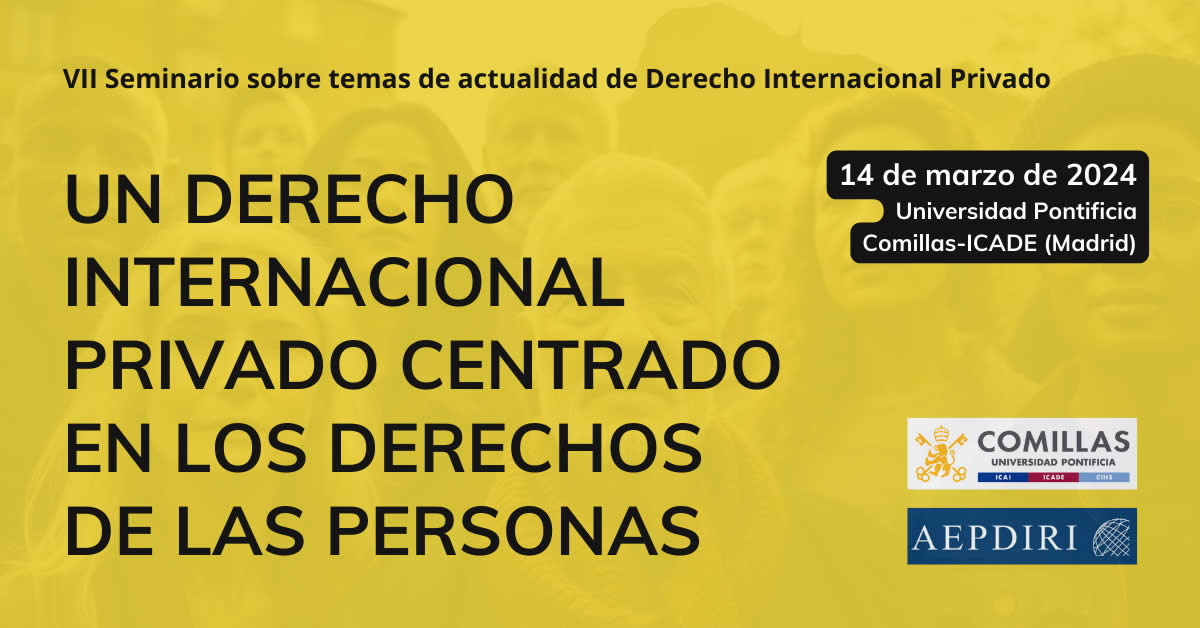Eduardo Álvarez-Armas is Lecturer in Law at Brunel University London and Affiliated Researcher at the Université Catholique de Louvain. He has kindly provided us with his thoughts on recent proposals for amending the Rome II Regulation. This is the first part of his contribution; a second one on corporate social responsibility will follow in the next days.
On December the 3rd, 2020, the EU commission published a call for applications, with a view to putting forward, by late 2021, a (legislative or non-legislative) initiative to curtail “abusive litigation targeting journalists and civil society”. As defined in the call, strategic lawsuits against public participation (commonly abbreviated as SLAPPs) “are groundless or exaggerated lawsuits, initiated by state organs, business corporations or powerful individuals against weaker parties who express, on a matter of public interest, criticism or communicate messages which are uncomfortable to the litigants”. As their core objective is to silence critical voices, SLAPPs are frequently grounded on defamation claims, but they may be articulated through other legal bases (as “data protection, blasphemy, tax laws, copyright, trade secret breaches”, etc) (p. 1).
The stakes at play are major: beyond an immediate limitation or suppression of open debate and public awareness over matters that are of significant societal interest, the economic pressure arising from SLAPPs can “drown” defendants, whose financial resources are oftentimes very limited. Just to name but a few recent SLAPP examples (For further review of cases throughout the EU see: Greenpeace European Unit [O. Reyes, rapporteur], “Sued into silence – How the rich and powerful use legal tactics to shut critics up”, Brussels, July 2020, p. 18ff): at the time of her murder in 2017, Maltese journalist Daphne Caruana Galizia was facing over 40 civil and criminal defamation lawsuits, including a 40-million US dollar lawsuit in Arizona filed by Pilatus Bank (Greenpeace European Unit [O. Reyes, rapporteur], pp. 9-12); in 2020, a one million euros lawsuit was introduced against Spanish activist Manuel García for stating in a TV program that the poor livestock waste management of meat-producing company “Coren” was the cause for the pollution of the As Conchas reservoir in the Galicia region.
In light of the situation, several European civil-society entities have put forward a model “EU anti-SLAPP Directive”, identifying substantive protections they would expect from the European-level response announced in point 3.2 of the EU Commission´s “European democracy action plan”. If it crystallized, an EU anti-SLAPP directive would follow anti-SLAPP legislation already enacted, for instance, in Ontario, and certain parts of the US.
Despite being frequently conducted within national contexts, it is acknowledged that SLAPPs may be “deliberately brought in another jurisdiction and enforced across borders”, or may “exploit other aspects of national procedural and private international law” in order to increase complexities which will render them “more costly to defend” (Call for applications, note 1, p. 1) Therefore, in addition to a substantive-law intervention, the involvement of private international law in SLAPPs is required. Amongst core private-international-law issues to be considered is the law applicable to SLAPPs.
De lege lata, due to the referred frequent resort to defamation, and the fact that this subject-matter was excluded from the material scope of application of the Rome II Regulation, domestic choice-of-law provisions on the former, as available, will become relevant. This entails a significant incentive for forum shopping (which may only be partially counteracted, at the jurisdictional level, by the “Mosaic theory”).
De lege ferenda, while the risk of forum shopping would justify by itself the insertion of a choice-of-law rule on SLAPPs in Rome II, the EU Commission´s explicit objective of shielding journalists and NGOs against these practices moreover pleads for providing a content-oriented character to the rule. Specifically, the above-mentioned “gagging” purpose of SLAPPs and their interference with fundamental values as freedom of expression sufficiently justify departing from the neutral choice-of-law paradigm. Furthermore, as equally mentioned, SLAPP targets will generally have (relatively) modest financial means. This will frequently make them “weak parties” in asymmetric relationships with (allegedly) libeled claimants.
In the light of all of this, beyond conventional suggestions explored over the last 15 years in respect of a potential rule on defamation in Rome II (see, amongst other sources: Rome II and Defamation: Online Symposium), several thought-provoking options could be explored, amongst which the following two:
1st Option: Reverse mirroring Article 7 Rome II
A first creative approach to the law applicable to SLAPPs would be to introduce an Article 7-resembling rule, with an inverted structure. Article 7 Rome II on the law applicable to non-contractual obligations arising from environmental damage embodies the so-called “theory of ubiquity” and confers the prerogative of the election of the applicable law to the “weaker” party (the environmental victim). In the suggested rule on SLAPPs, the choice should be “reversed”, and be given to the defendant, provided they correspond with a carefully drafted set of criteria identifying appropriate recipients for anti-SLAPP protection.
However, this relatively straightforward adaptation of a choice-of-law configuration already present in the Rome II Regulation could be problematic in certain respects. Amongst others, for example, as regards the procedural moment for performing the choice-of-law operation in those domestic systems where procedural law establishes (somewhat) “succinct” proceedings (i.e. with limited amounts of submissions from the parties, and/or limited possibilities to amend them): where a claimant needs to fully argue their case on the merits from the very first written submission made, which starts the proceedings, how are they meant to do so before the defendant has chosen the applicable law? While, arguably, procedural adaptations could be enacted at EU-level to avoid a “catch-22” situation, other options may entail less legislative burden.
2nd option: a post-Brexit conceptual loan from English private international law = double actionability
A more extravagant (yet potentially very effective) approach for private-international-law protection would be to “borrow” the English choice-of-law rule on the law applicable to defamation: the so-called double actionability rule. As it is well-known, one of the core reasons why “non-contractual obligations arising out of violations of privacy and rights relating to personality, including defamation” were excluded from the material scope of the Rome II Regulation was the lobbying of publishing groups and press and media associations during the Rome II legislative process (see A. Warshaw, “Uncertainty from Abroad: Rome II and the Choice of Law for Defamation Claims”). With that exclusion, specifically, the English media sector succeeded in retaining the application by English courts of the referred rule, which despite being “an oddity” in the history of English law (Vid. D. McLean & V. Ruiz Abou-Nigm, The Conflict of Laws, 9th ed., Swett & Maxwell, 2016, p. 479), is highly protective for defendants of alleged libels and slanders. The double actionability rule, roughly century and a half old, (as it originated from Philips v. Eyre [Philips v. Eyre (1870) L.R. 6 Q.B. 1.] despite being tempered by subsequent case law) is complex to interpret and does not resemble (structurally or linguistically) modern choice-of-law rules. It states that:
“As a general rule, in order to found a suit in England for a wrong alleged to have been committed abroad, two conditions must be fulfilled. First, the wrong must be of such a character that it would have been actionable if committed in England … Secondly, the act must not have been justifiable by the law of the place where it was done” (Philips v. Eyre, p. 28-29).
The first of the cumulative conditions contained in the excerpt is usually understood as the need to verify that the claim is viable under English law (Lex fori). The second condition is usually understood as the need to verify that the facts would give rise to liability also under foreign law. Various interpretations of the rule can be found in academia, ranging from considering that once the two cumulative requirements have been met English law applies (Vid. Dicey, Morris & Collins, The Conflict of Laws, vol. II, 15th ed., Swett & Maxwell, 2012, pp. 2252-2270, para. 35-111), to considering that only those rules that exist simultaneously in both laws (English and foreign) apply, or that exemptions from liability from either legal system free the alleged tortfeasor (Vid. Cheshire, North & Fawcett, Private International Law, 15th ed., OUP, 2017, p. 885. Similarly, Dicey, Morris & Collins, The Conflict of Laws, vol. II, 15th ed., Swett & Maxwell, 2012, pp. 2252-2270, para. 35-128). Insofar as it is restrictive, and protective of the defendant, double actionability is usually understood as a “double hurdle” (Vid. Cheshire, North & Fawcett, Private International Law, 15th ed., OUP, 2017, p. 885; D. McLean & V. Ruiz Abou-Nigm, The Conflict of Laws, 9th ed., Swett & Maxwell, 2016, p. 479) to obtaining reparation by the victim, or, in other words, as having to win the case “twice in order to win [only] once” (Vid. A. Briggs, The Conflict of Laws, 4th ed., Clarendon Law Series, OUP, 2019, p. 274). Thus, the practical outcome is that the freedom of speech of the defendant is preserved.
A plethora of reasons make this choice-of-law approach controversial, complex to implement, and difficult to adopt at an EU level: from a continental perspective, it would be perceived as very difficult to grasp by private parties, as well as going against the fundamental dogma of EU private international law: foreseeability. This does not, nevertheless, undermine the fact that it would be the most effective protection that could be provided from a private-international-law perspective. Even more so than the protection potentially provided by rules based on various “classic” connecting factors pointing towards the defendant´s “native” legal system/where they are established (as their domicile, habitual residence, etc).
Truth be told, whichever approach is chosen, a core element which will certainly become problematic will be the definition of the personal scope of application of the rule, i.e. how to precisely identify subjects deserving access to the protection provided by a content-oriented choice-of-law provision of the sort suggested (and/or by substantive anti-SLAPP legislation, for that matter). This is a very delicate issue in an era of “fake news”.



